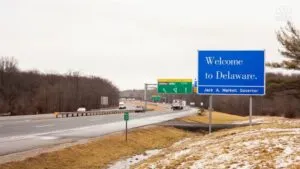Fewer tragedies are happening on American roads. Data from 2024 points to a consistent drop in traffic fatalities, carrying forward momentum that began in mid-2022.
That encouraging trajectory has given rise to renewed optimism among safety advocates, government agencies, and the general public.
Here’s a brief look at the numbers that reveal positive news. There is still more ground to cover before roads become entirely free of needless loss, but the signs are very good.
Table of Contents
ToggleOfficial Statistics
NHTSA estimated 29,135 traffic deaths in the first nine months of 2024, signaling a 4.4% reduction compared to the projected 30,490 fatalities during the same timeframe in 2023.
It marks the tenth straight quarter of decreasing fatalities, going back to the second quarter of 2022. Meanwhile, the Federal Highway Administration (FHWA) found that vehicle miles traveled (VMT) climbed by around 19.7 billion miles—or 0.8%—over the prior year.
More cars on the road usually lead to a higher risk of collisions, yet the fatality rate for every 100 million VMT still shrank from 1.24 in 2023 to 1.18 in 2024.
In simpler terms, more drivers were on the road, yet fewer people lost their lives. It’s an achievement worth celebrating, and it reflects an array of contributing factors, including safer cars, more vigilant drivers, and robust federal programs.
Contributing Factors to the Decline
Data points to several forces working together:
National Roadway Safety Strategy (NRSS)
Introduced in 2022 by the U.S. Department of Transportation (USDOT), this multi-pronged approach addresses high-risk behaviors, more efficient post-crash care, and safer speeds. Collaboration among local, state, and federal agencies is central to the effort.
Safe Streets and Roads for All Program
Funded through the Bipartisan Infrastructure Law, the program awarded grants to over 1,600 communities nationwide, serving about three-quarters of the U.S. population.
Expanded sidewalks, better signage, and upgraded intersections are just a few examples of the projects funded under this umbrella.
Vehicle Safety Technologies
NHTSA has mandated automatic emergency braking systems for all new passenger cars and light trucks by 2029. Additional features like lane departure warnings and adaptive cruise control are becoming more common in modern fleets.
Public Awareness and Enforcement
Campaigns aimed at promoting seat belt use and curtailing impaired or distracted driving have been ramped up. Law enforcement agencies continue to adopt stricter measures against speeding and reckless behaviors behind the wheel.
To complement enforcement measures against speeding and reckless driving, platforms like The Accident Helpers offer critical assistance and information for those navigating the aftermath of car accidents.
Safety Strategies and Innovations

Beyond conventional seat belt laws and speed limit enforcement, a fresh wave of innovative tools and programs has contributed to a safer driving environment:
- Advanced Driver Assistance Systems (ADAS): Technology such as forward collision warning, adaptive headlights, and pedestrian detection helps motorists avoid sudden dangers.
- Infrastructure Improvements: Roundabouts, rumble strips, and better lighting often minimize collisions by making roads easier to navigate. Bike lanes and pedestrian walkways also protect vulnerable road users.
- Data-Driven Targeting: Agencies now examine accident hotspots, demographic trends, and behavioral patterns to determine where resources could make the biggest impact.
Experts credit forward-thinking approaches like these for saving lives on American roads each day.
Variation Across States
While the overall decline in traffic deaths is promising, certain regions have not achieved similar progress.
NHTSA’s early estimates reveal a downturn for 35 states and Puerto Rico during the first nine months of 2024, but 15 states and the District of Columbia experienced a rise. Officials caution that factors like urban density, weather patterns, and local laws play a part in these shifts.
Local laws will play a role in determining the car insurance you will choose. Of course, you would need to hire professionals, to provide you with crucial advice in this case.
High-population areas might see greater challenges linked to congestion, whereas rural regions can face different problems tied to longer response times for emergency services.
Ongoing Obstacles
Numbers can look better from one year to the next, yet there are still important hurdles to address:
- Risky Driving Behaviors: Impaired driving, excessive speed, and ignoring seat belt laws remain troubling. Alcohol-impaired driving, in particular, still claims thousands of lives every year.
- Vulnerable Road Users: Cyclists, pedestrians, and motorcyclists face higher odds of severe or fatal injuries during collisions. Officials urge drivers to share the road responsibly.
- Aging Infrastructure: Roads, highways, and bridges built decades ago need consistent updates, not only to address wear and tear but also to meet modern safety standards.
Key Public Awareness Campaigns
NHTSA’s “Speeding Catches Up with You”
Launched in July 2024, the Speeding Catches Up with You initiative spotlights one of the most common contributing factors to fatal crashes. Although fatalities tied to speeding dropped 6%, it remained a factor in nearly three out of ten deadly accidents in 2022.
According to NHTSA, the campaign used English and Spanish-language ads on TV, radio, and digital platforms with a $9.5 million national media buy. The hope was to reach drivers of all ages, reminding them to slow down, especially during summer travel.
Labor Day “Drive Sober or Get Pulled Over”
August 2024 brought a push against impaired driving through the Drive Sober or Get Pulled Over campaign. Alcohol-related accidents accounted for nearly one-third of all fatal crashes in 2022, claiming a life every 39 minutes.
Backed by $15 million in national media buys, the effort ran from mid-August through early September. Along with high-visibility law enforcement, it introduced a new television spot, Don’t Roll the Throttle, aimed at motorcyclists who might be tempted to ride under the influence.
Winter Holiday “Drive Sober or Get Pulled Over”
Even the festive season can have a dark side when impaired driving spikes. For that reason, NHTSA launched a winter holiday campaign in December 2024, supported by $14 million in media spending.
Advertisements appeared on TV, radio, and online from December 11, 2024, through New Year’s Day 2025. Law enforcement agencies joined forces nationwide, aiming to discourage anyone from driving while under the influence of alcohol or drugs.
FMCSA’s “Our Roads, Our Safety”
Large trucks and buses pose extra hazards when collisions occur. The Federal Motor Carrier Safety Administration (FMCSA) has placed heavy emphasis on the Our Roads, Our Safety campaign, which shares guidance aimed at helping all drivers coexist safely with commercial vehicles.
Educational materials cover concerns like distracted driving, work zone precautions, and maintaining safe speeds near large trucks or buses.
“Click It or Ticket” Seat Belt Enforcement
Seat belts remain one of the simplest yet most effective ways to avoid severe injury on the road. The May 2024 Click It or Ticket initiative focused on regions and demographics that typically lag in seat belt use, including certain rural parts of the country and nighttime drivers.
With an $11.2 million investment in public awareness, the campaign included broadcast, digital, and social media content. Strategies tied to enforcement sought to remind everyone that seat belts can be a lifesaving habit.
Economic Conditions and Traffic Fatalities

Shifts in the economy can have surprising effects on overall safety. More travel often correlates with higher crash counts, while economic slowdowns may reduce VMT and, in turn, lower fatalities.
Analysis shows that for every 1% boost in VMT, there’s roughly a 0.96% rise in fatalities. On the other hand, each unit uptick in unemployment has historically coincided with a 2.1% drop in traffic deaths.
In other words, bustling economic activity might promote more mobility, but it comes with an elevated risk of crashes.
Summary
Encouraging trends seen in 2024 hint at further reductions ahead if all stakeholders remain focused on traffic safety.
Progress in areas like automatic braking and broader adoption of seat belt usage signals that collaboration between government agencies, industry partners, and everyday drivers can yield results. Yet total eliminations of traffic deaths have not been reached.
The goal of zero traffic fatalities stands as a unifying vision that experts believe is within reach, provided there is a thorough commitment to strong policies, public awareness campaigns, and ongoing investment in roads and technology.
References
- nhtsa.gov – NHTSA Estimates Traffic Fatalities Declined 4.4% in the First Nine Months of 2024
- nhtsa.gov – NHTSA Finalizes Key Safety Rule to Reduce Crashes and Save Lives
- nhtsa.gov – Speeding Catches Up With You
- nhtsa.gov – NHTSA Launches Speeding Prevention Campaign, Reminding Drivers Speeding Has Deadly Consequences
- nhtsa.gov – Click It or Ticket Kickoff Event
- fhwa.dot.gov – Policy and Governmental Affairs – Office of Highway Policy Information
- transportation.gov – National Roadway Safety Strategy
- iihs.org – A projection of United States traffic fatality counts in 2024
Related Posts:
- 26 Most Dangerous Cities in US - Updated Statistics for 2025
- America's Murder Capitals: A 2025 Ranking of the…
- How Many People Die Every Day in US in 2025
- What Is the Most Dangerous Country in the World in 2025
- Safest US. States for Drivers Ranked by Car Accident Rates
- Safest Countries in the World in 2025 - GPI…









